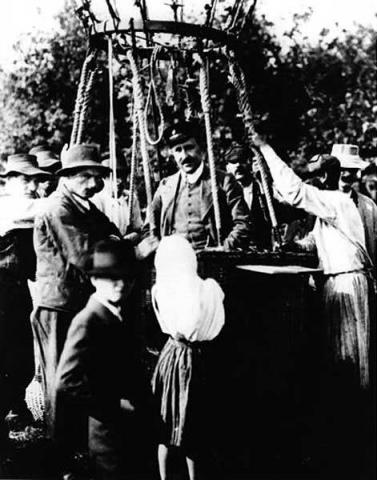Victor Hess discovers cosmic rays

In 1911 and 1912 Austrian physicist Victor Hess made a series of ascents in a balloon to take measurements of radiation in the atmosphere. He was looking for the source of an ionizing radiation that registered on an electroscope – the prevailing theory was that the radiation came from the rocks of the Earth.
To test the theory, in 1909 German scientist Theodor Wulf measured the rate of ionization near the top of the Eiffel tower (at a height of about 300 metres) using a portable electroscope. Though he expected the ionization rate to decrease with height, Wulf noted that the ionization rate at the top was just under half that at ground level – a much less significant decrease than anticipated.
Victor Hess's balloon flights took such measurements further. In 1911 his balloon reached an altitude of around 1100 metres, but Hess found "no essential change" in the amount of radiation compared with ground level. Then, on 17 April 1912, Hess made an ascent to 5300 metres during a near-total eclipse of the Sun. Since ionization of the atmosphere did not decrease during the eclipse, he reasoned that the source of the radiation could not be the Sun – it had to be coming from further out in space. High in the atmosphere, Hess had discovered a natural source of high-energy particles: cosmic rays.
Hess shared the 1936 Nobel prize in physics for his discovery, and cosmic rays have proved useful in physics experiments – including several at CERN – since.
Find out more:
About cosmic rays (from the CERN courier)
- A discovery of cosmic proportions
- Domenico Pacini and the origin of cosmic rays
- LHCf: bringing cosmic collisions down to Earth
Cosmic rays at CERN
- The Large Hadron Collider forward experiment
- The CLOUD experiment